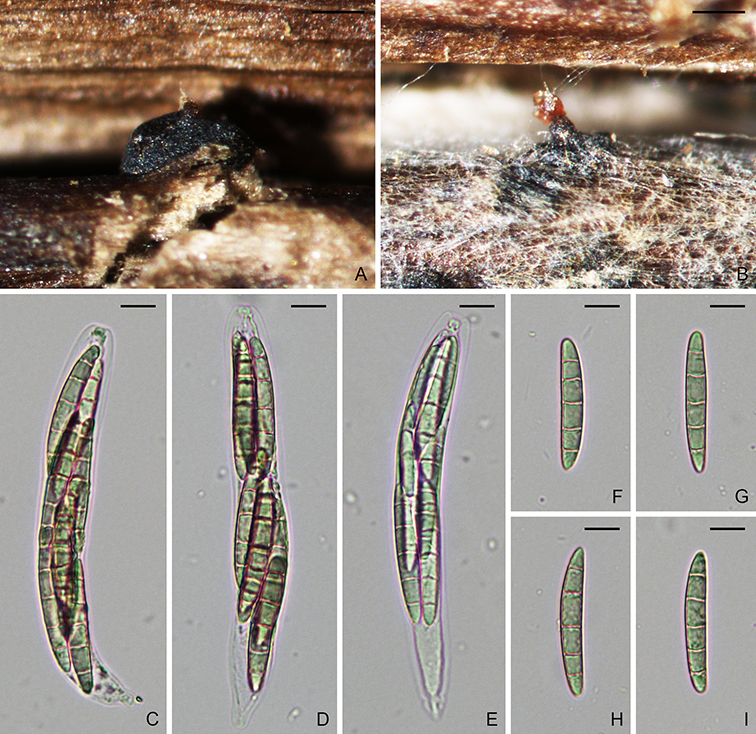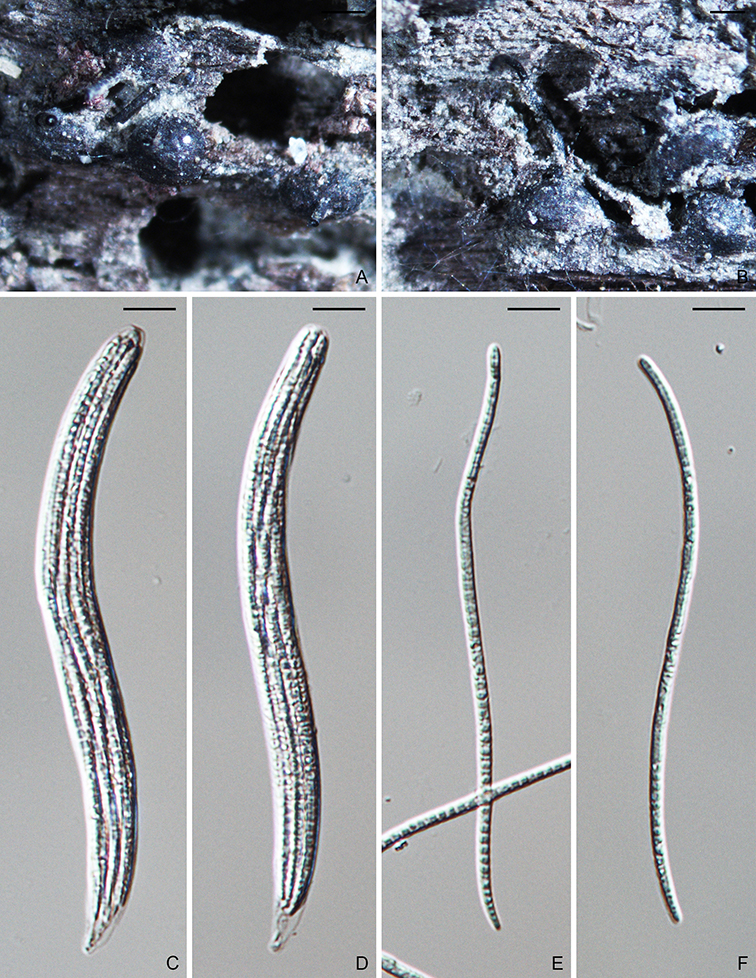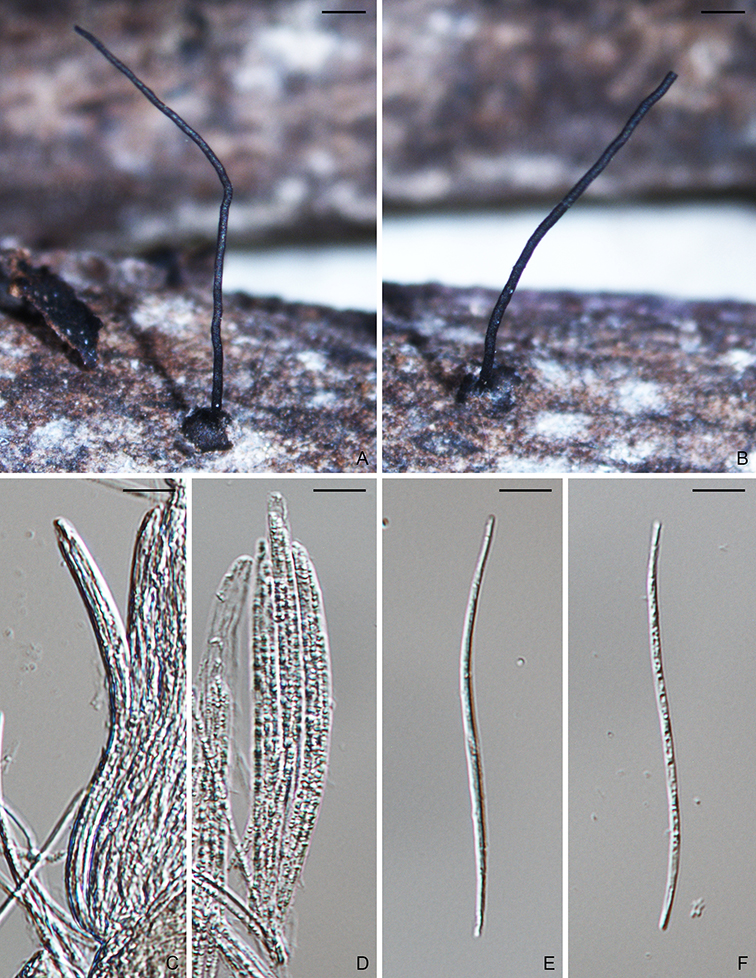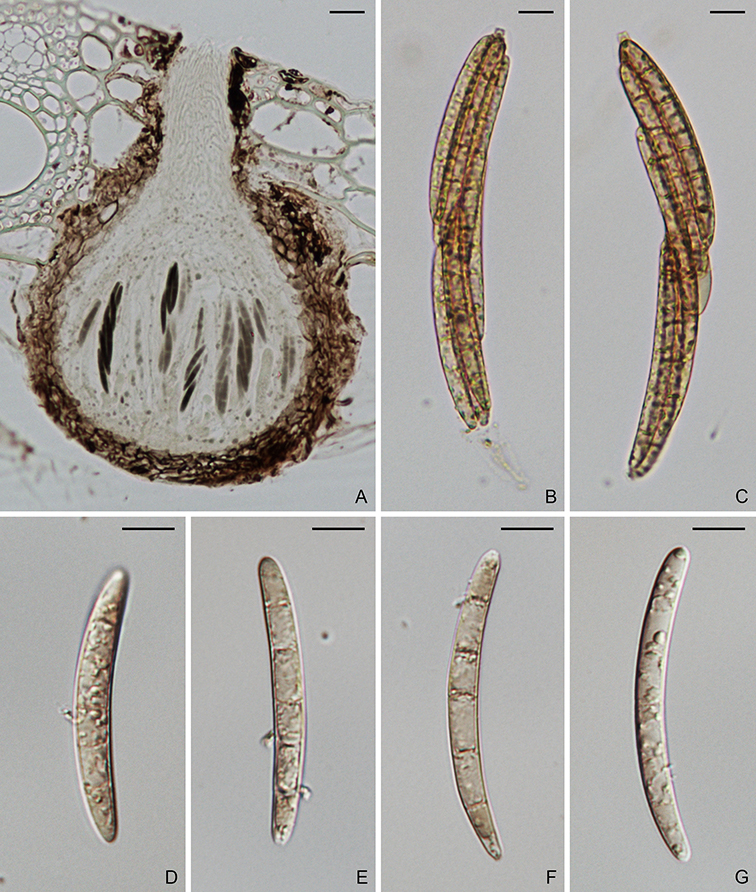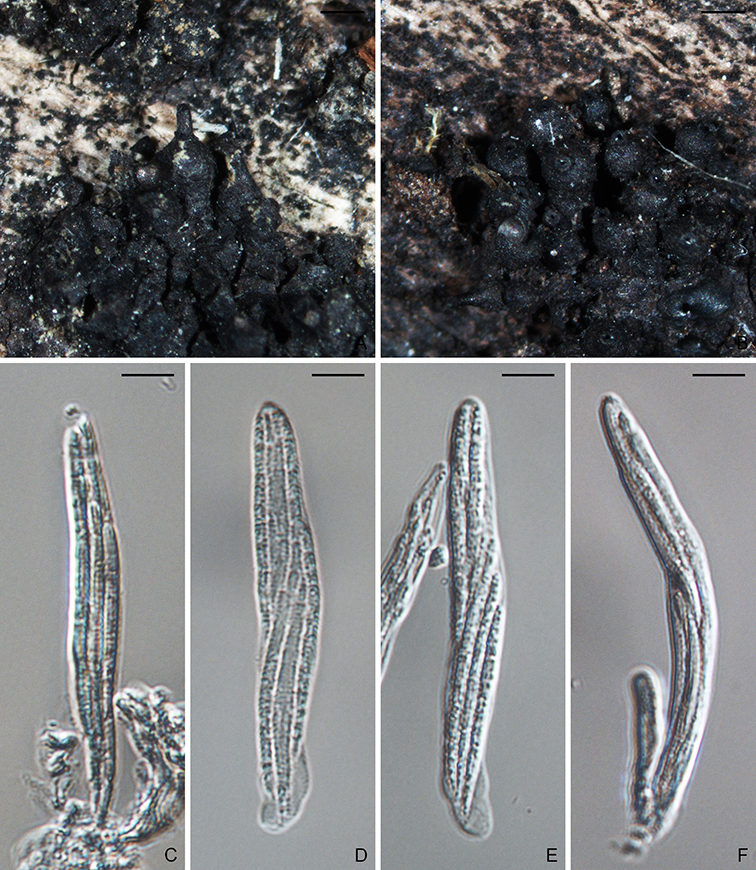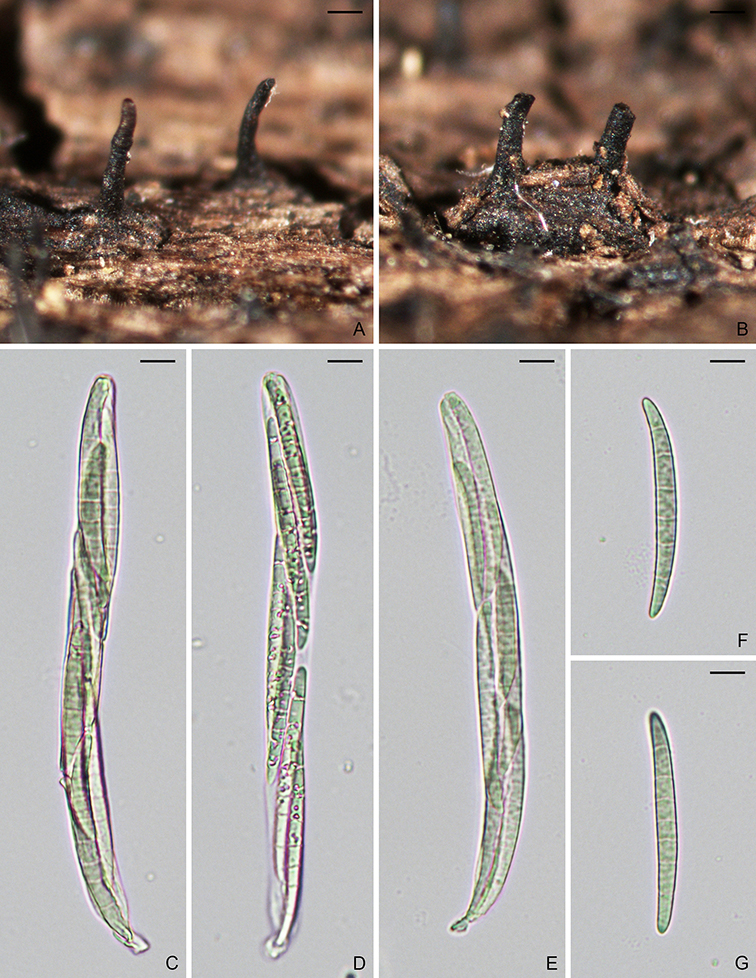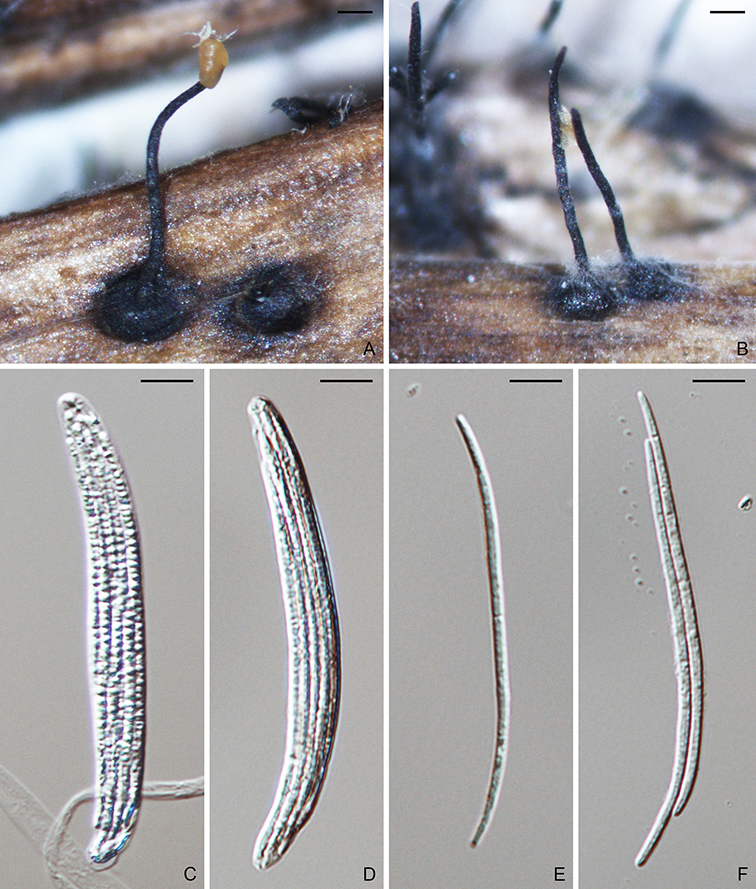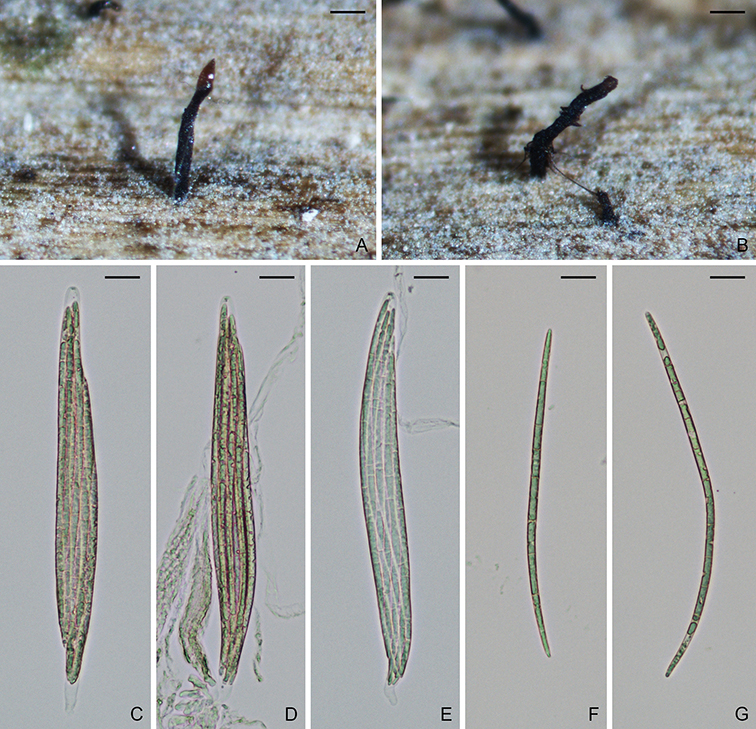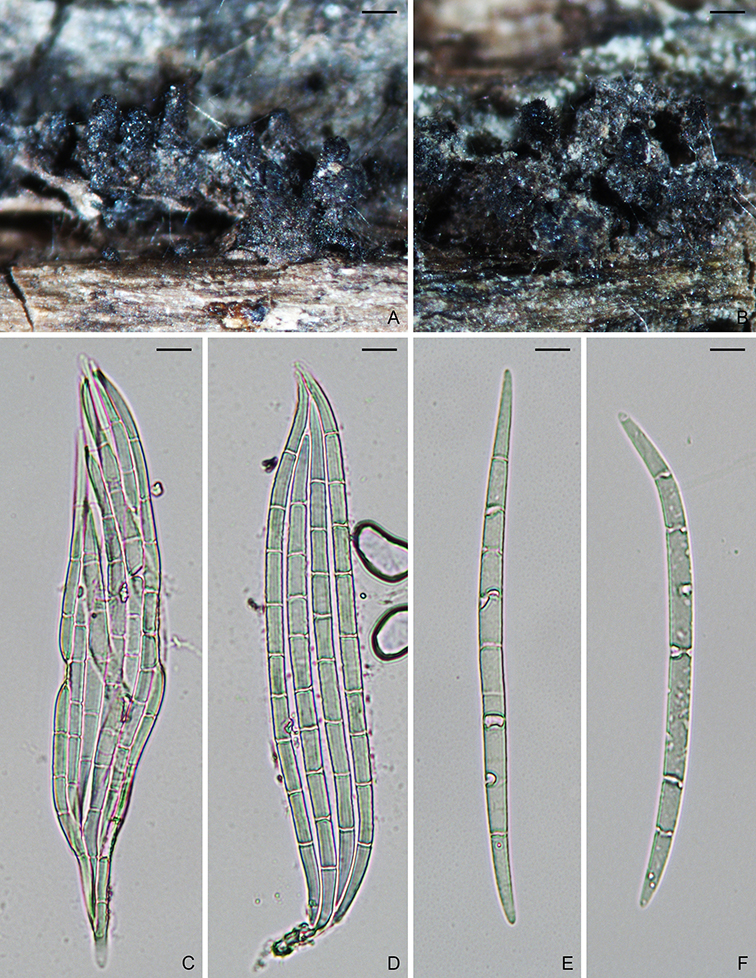
Figure. Pseudohalonectria falcata (NYBG01050484). A–B. Ascomata. C–D. Asci. E–F. Ascospores. Scale bars: A–B = 200 µm; C–F = 10 µm.
Pseudohalonectria falcata Shearer, Can. J. Bot. 67(7): 1945 (1989).
MycoBank: MB136211.
Morphological description: Ascomata perithecial, submerged, gregarious, brown to orange brown, globose to subglobose, 280–550 µm in diam, with an orange brown to yellow brown, cylindrical, neck, 85–225 × 80–125 µm. Paraphyses hyaline, septate. Asci unitunicate, clavate, 8-spored, 160–200 × 20–27 µm, with a refractive ring. Ascospores parallel in the ascus, curved, hyaline to yellowish, falcate, 6–10-septate, not constricted at the septum, smooth, 100–170 × 5–7.5 µm.
Specimens examined: USA, Illinois, Cass County, Beardstown, from submerged twig, 07 Nov. 1987, C.A. Shearer, CS-617-2 (holotype, NYBG01050484, NYBG03380668, NYBG01050483); ibid., Mason County, Quiver Creek, 07 Nov. 1987, C.A. Shearer, CS-617-1 (NYBG03380667).
Hosts/substrates: form submerged Phragmites sp. and other woody debris.
References:
Shearer CA. 1989. Pseudohalonectria (Lasiosphaeriaceae), an antagonistic genus from wood in freshwater. Canadian Journal of Botany. 67(7):1944–1955.
Copyright 2022 by The American Phytopathological Society. Reproduced, by permission, from Luo, J., and Zhang, N. 2022. The Rice Blast Fungus and Allied Species: A Monograph of the Fungal Order Magnaporthales (https://my.apsnet.org/APSStore/Product-Detail.aspx?WebsiteKey=2661527A-8D44-496C-A730-8CFEB6239BE7&iProductCode=46826). American Phytopathological Society, St. Paul, MN.
